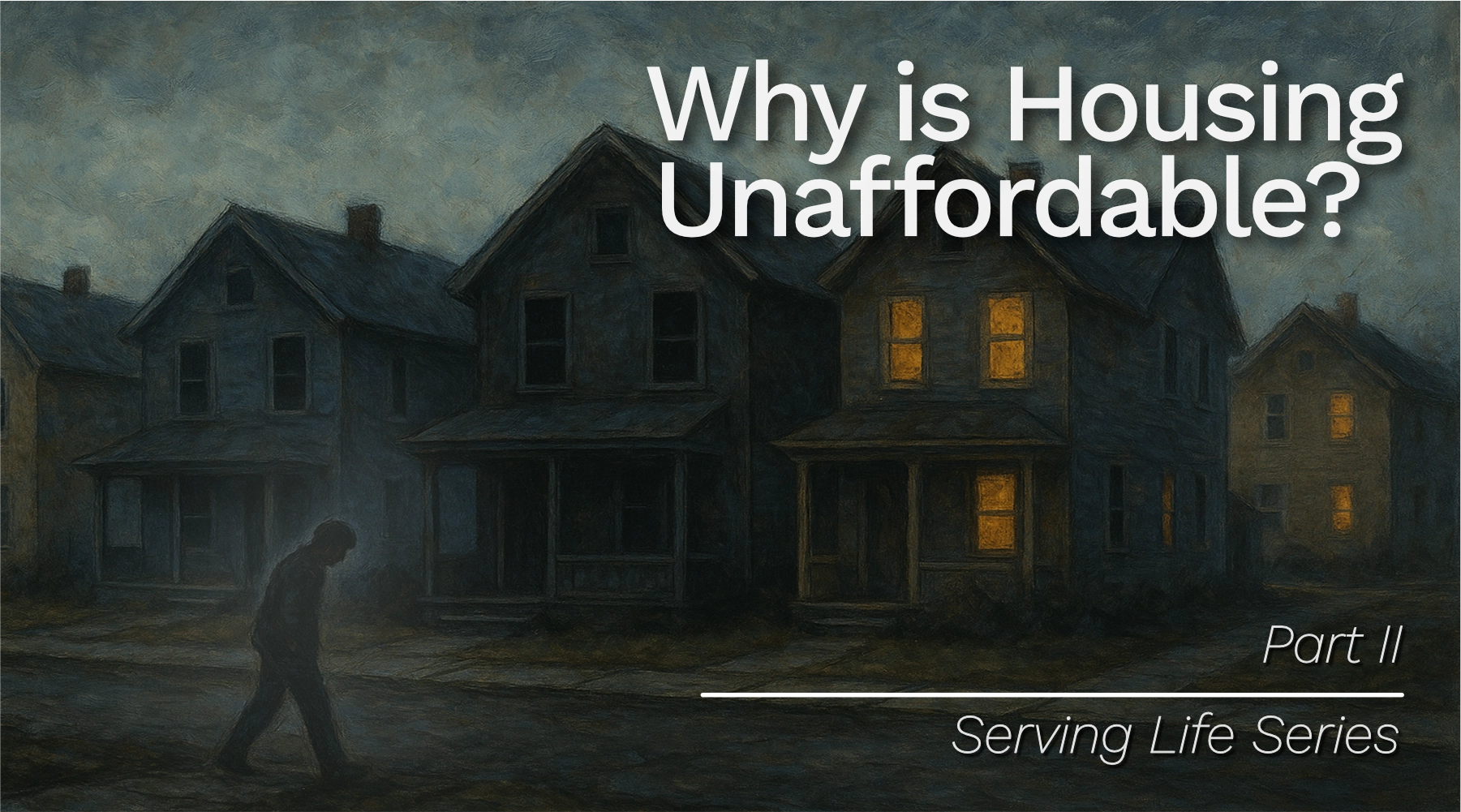Blog

Cody Recker and Jessica Perez thought they had it figured out. A modest home in Los Angeles, raising their daughter, paying rent on time. The place needed repairs, but it was a home. Then came the notice: get out, we’re fixing it up. Except they didn’t. The landlord — a corporate giant — put the house straight on the market. Just like that, stability turned to eviction (Housing Is a Human Right).
Across the world in Brisbane, families walk past blocks of houses where more than a third sit empty. Dark windows in neat rows, bought and left idle. Parents who can’t find an affordable rental see those ghost suburbs as a slap in the face: homes exist, but not for them (Courier Mail).
In Part II, we are tracing the fictions that hold the Story Lens in place. The many stories that have become invisible to us.
The housing crisis isn’t natural. It’s not some unavoidable shortage or law of markets. It’s the making of our stories.
We turned land into property, and property into investment.
You’ve heard the lines: “Real estate is your biggest asset.” “Your home is your nest egg.”
These sound like common sense, but they’re myths dressed up as wisdom. They’ve blinded us to life itself.
The question is not whether we see this — most of us do. The question is: how do we change it?
Through the Story Lens, belonging collapses into ownership. Value shrinks into price.
“This block is worth half a million.”
“This house belongs to the company.”
Neutral on the surface, those statements cut away the soil, the shelter, the safety, the community.
The myths underneath are old:
Together, they make property feel inevitable, even when families are unhoused and houses sit empty.
But look again.
Through the Life Lens, we can see that a home is not an asset. It’s not just a price tag or a deed. A home is where life happens — safety, comfort, connection. The ground where community takes root.
Property is just a story.
Home is life.
And other stories are possible. Not fantasies. Not utopias. Stories already unfolding:
None of these experiments are perfect. But they point to something real — a way of living where housing is about life, not speculation.
This is what a collaborative economy is about. Not to divide us, but to unite us. Not only to create wealth, but to create wellbeing — the kind of wealth that keeps families rooted and communities strong.
Let’s be real. The housing crisis isn’t on you. It’s not because families didn’t work hard enough or budget carefully. It’s because the rules of the system were written to treat homes as assets, not as places where life and community take root.
And here’s the harder truth: all of us are living through those stories. The wealthy and the struggling. Landlords and tenants. Politicians, investors, renters, parents, kids. It’s not just that some people do harm (though some do). It’s that everyone is playing their role in the story.
Which means fighting people won’t change much. We’ve tried working the system. We’ve tried protesting it, reforming it, begging it. But if the story itself is the problem, then the real move is to flip the lens and change the story — to one that serves life. And then build the tools that make that story real.
Flip the lens and the world looks different: stories that serve life instead of discounting it. Neighborhoods that measure wellbeing, not just wealth. Homes that exist for living, not balance sheets.
If the current story serves you, stay in it. If you’re comfortable treating homes as assets, if the myth works for you, then keep on keeping on.
But if you feel the break — if you see families pushed out while houses sit empty, if you know something’s off — then here’s the invitation: flip the story.
Maybe it’s impossible. Maybe it’s utopic. But we won’t know until we try. If we don’t, we’re stuck with what is.
No one’s going to hand this to us. Governments and markets are too deep in the old story. The opening is here, with us: imagining and building systems where life is the guide, and stories follow it.
And this is the time.
We are the most educated, the most informed, and the most connected humanity has ever been. Add to that the technology in our hands — tools for coordination, for transparency, for creation at a scale our ancestors couldn’t dream of.
There is no life-serving story we can’t make real. If we choose it.